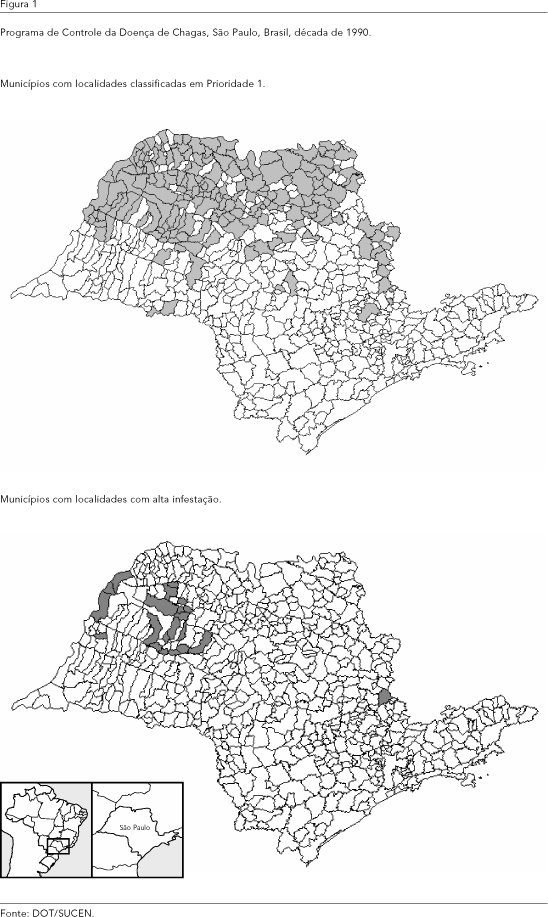The purpose of our investigation was to analyze the persistence, in the State of São Paulo, of domiciliary units highly infested with Chagas disease triatomine vectors. Comprehensive epidemiologic information collected from 1990 to 1999 in the State of São Paulo was retrieved from database files. Consistently high infestation rates were found in 43 localities distributed among 21 municipalities in the Araçatuba region. Captures produced predominantly peridomiciliary Triatoma sordida specimens, mostly adult females and fifth-instar nymphs, 94.6% of which containing ingesta negative for human blood. The houses, mostly inhabited (87.4%), were located near the residual woodland savanna in 64.3% of the localities. Poultry coops were found in association with 97.6% of all domiciliary units. Interestingly, in all the houses with persistent infestation, the inhabitants paid no evident attention to hygiene Lack of timely infestation control associated with the biological characteristics of the reduviid species involved, along with the conditions prevailing around the dwellings, favor the repeated invasion and consequent maintenance of colonization by triatomines.
Chagas Disease; Vector Control; Triatomine




